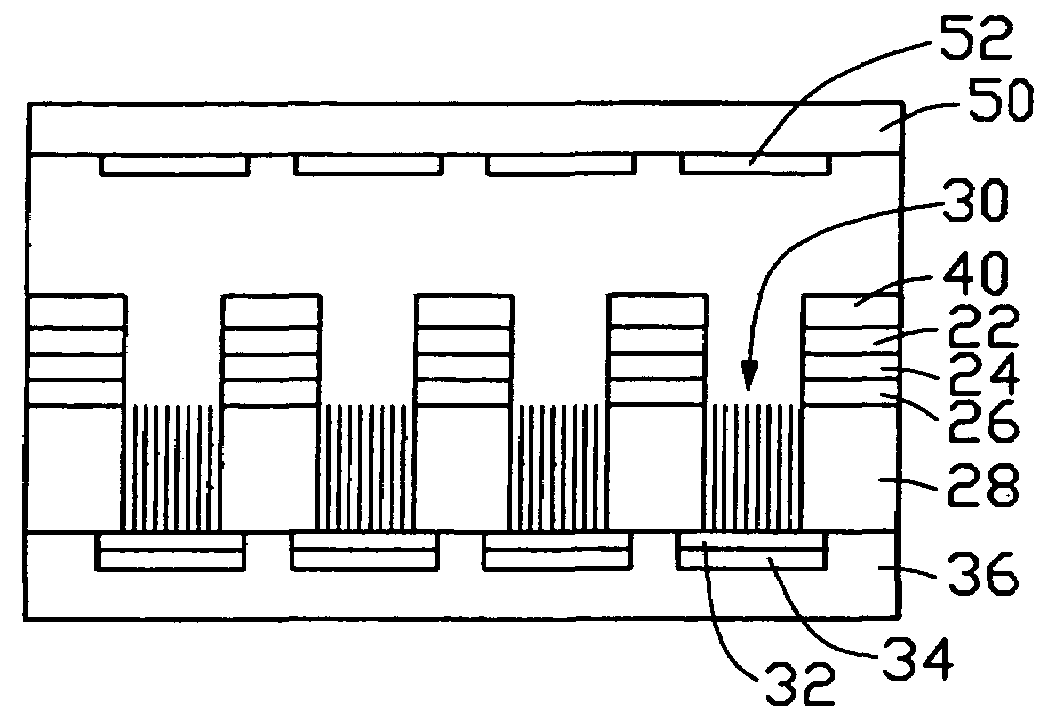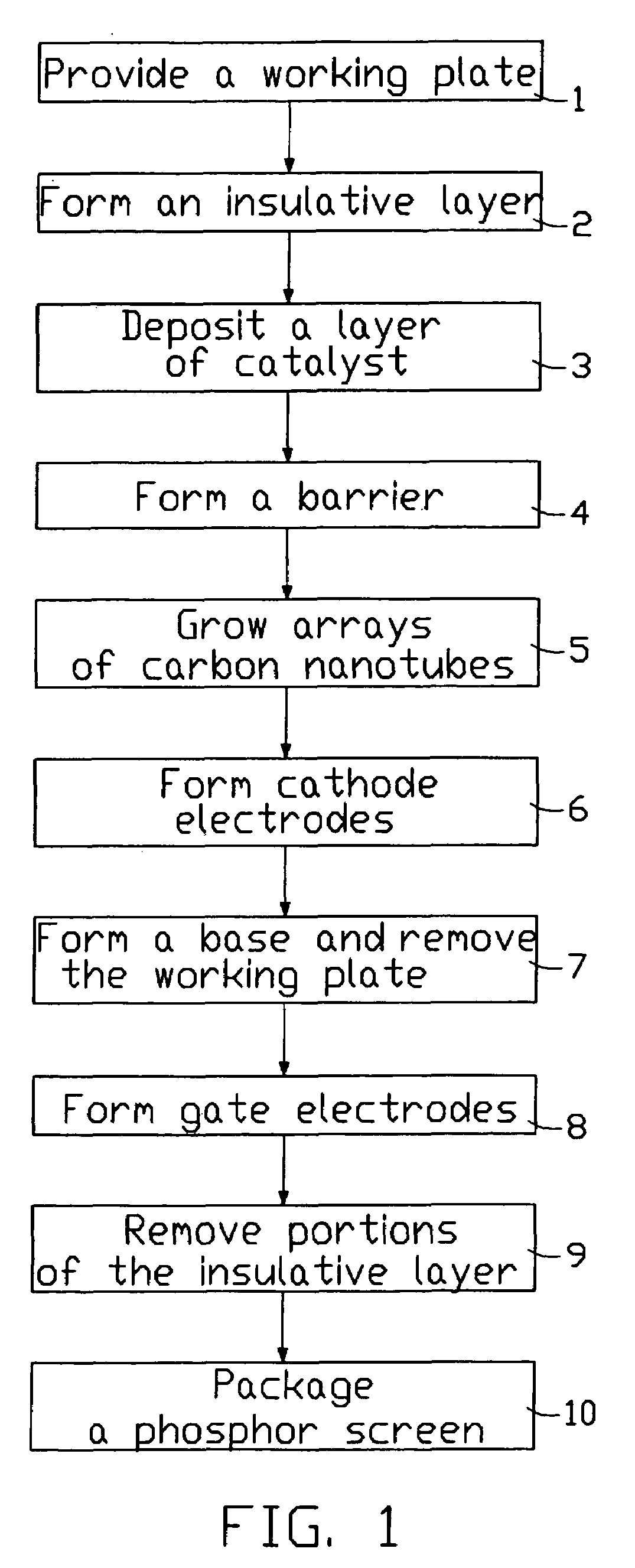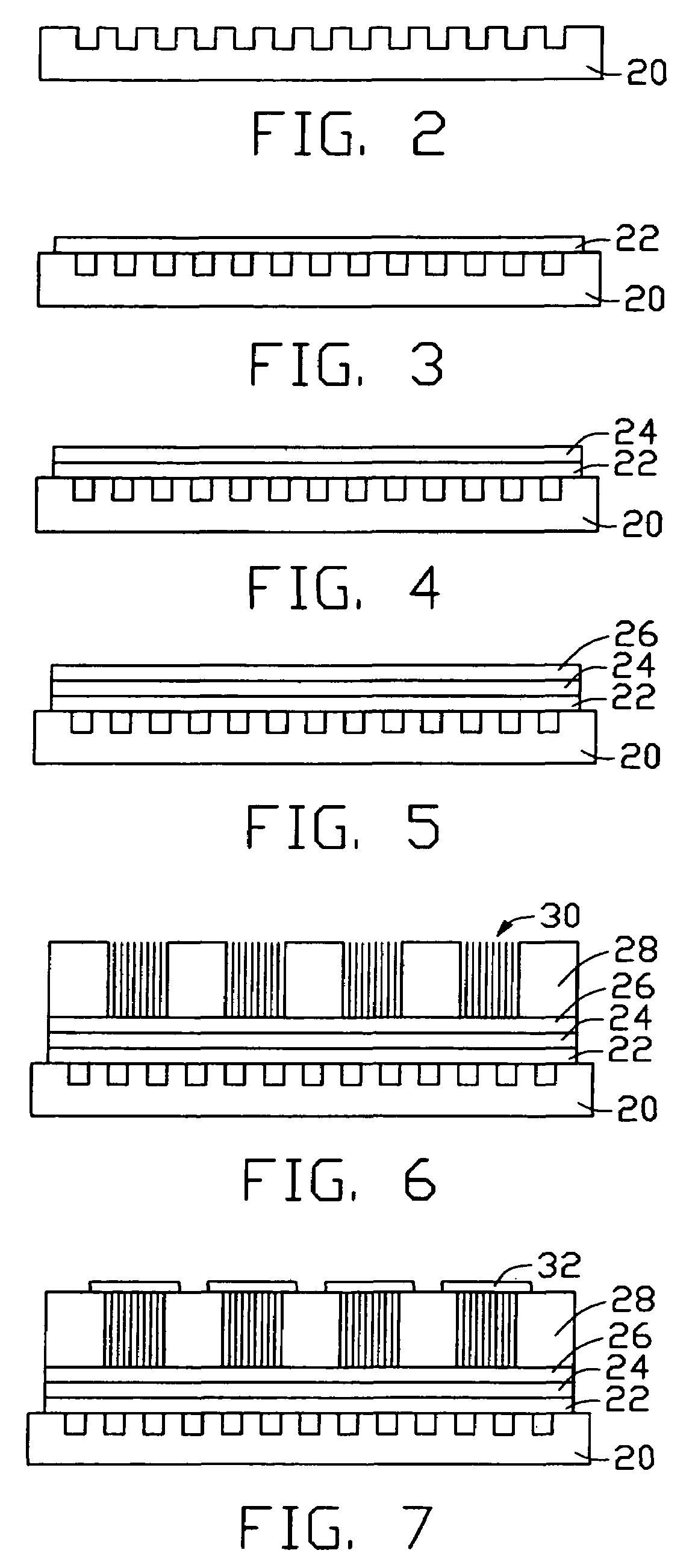Method for making a carbon nanotube-based field emission display
a carbon nanotube and display device technology, applied in the field of carbon nanotube field emission display devices, can solve the problems of difficult control of the distance between the emitter and the gate electrode, the inability to reliably produce field emission from the bundle of carbon nanotubes, and the inability to precisely control the growth heigh
- Summary
- Abstract
- Description
- Claims
- Application Information
AI Technical Summary
Benefits of technology
Problems solved by technology
Method used
Image
Examples
Embodiment Construction
[0024]A preferred method for making a carbon nanotube-based field emission display device in accordance with the invention will be described below with reference to FIG. 1.
[0025]Step 1 is providing a working plate. This is an optional step for the purpose of conveniently carrying out the subsequent steps. The working plate can be a nonmetallic material or a metallic material that is sufficiently heat stable to endure high temperatures at which carbon nanotubes are produced.
[0026]Step 2 is forming an insulative layer on the working plate. The insulative layer is made of insulative material such as silicon oxide, and has a predetermined thickness. In order to form carbon nanotubes from a common surface, a first surface of the insulative layer should be smooth and flat. Preferably, a variation in flatness of the first surface is less than 1 micron.
[0027]Step 3 is depositing a layer of catalyst on the first surface of the insulative layer. Generally, the catalyst is a transition metal s...
PUM
 Login to View More
Login to View More Abstract
Description
Claims
Application Information
 Login to View More
Login to View More - R&D
- Intellectual Property
- Life Sciences
- Materials
- Tech Scout
- Unparalleled Data Quality
- Higher Quality Content
- 60% Fewer Hallucinations
Browse by: Latest US Patents, China's latest patents, Technical Efficacy Thesaurus, Application Domain, Technology Topic, Popular Technical Reports.
© 2025 PatSnap. All rights reserved.Legal|Privacy policy|Modern Slavery Act Transparency Statement|Sitemap|About US| Contact US: help@patsnap.com



